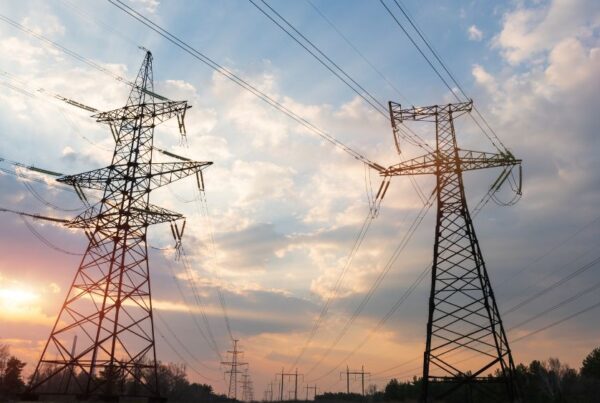
By Emma Keisser, Hydrogen Advisory
The development of hydrogen regulations worldwide reflects a pivotal shift in energy policy and environmental strategies aimed at addressing climate change and transitioning to sustainable energy sources. This reflection explores the significant strides and ongoing challenges in hydrogen regulation, examining how different countries are navigating the complex landscape of hydrogen economy development.
Importance of Policies and Regulations
In 2017, Japan stood alone with a national hydrogen strategy. Fast forward to today, over 50 countries have either developed or are in the process of creating hydrogen strategies. This surge in interest highlights the growing importance of hydrogen value chains worldwide. However, the adoption of low-carbon hydrogen solutions in hard-to-abate areas hinges on policy support and cost competitiveness. The main challenge lies in bridging the gap between offtakers’ willingness to pay and the high production costs associated with low-carbon hydrogen. This challenge applies to sectors shifting from grey to green hydrogen and those transitioning from other energy sources to low-carbon hydrogen. Various policy instruments have been implemented to accelerate the adoption of low-carbon hydrogen, like public funding to producers and offtakers. Other initiatives like RED III and RefuelEU introduce binding targets and non-compliance penalties, potentially incentivising greater willingness to pay. Financial incentives and binding targets will serve as levers to promote the global low-carbon hydrogen economy. The hydrogen economy operates as an interconnected system involving supply, demand, and transportation elements that must collaborate for efficient hydrogen consumption.
Current State of Policy Levers Globally
Each country’s hydrogen strategy depends on economic health, available resources, and existing infrastructure. Some nations prioritise domestic supply, aiming to meet their own hydrogen demand and export to key demand centres abroad. These countries typically possess abundant renewable energy, available land, and affordable power (e.g., Chile, Great Britain, and Australia). Conversely, other regions focus on hydrogen imports, emphasising demand development and transportation and storage infrastructure. Large industrial players in these areas lack the land and renewable resources necessary for exclusive reliance on domestic hydrogen (e.g., South Korea and Germany). Addressing the challenges at each step of the hydrogen supply chain requires tailored support mechanisms for
- Hydrogen production
- Hydrogen transport and storage
- Hydrogen use
State of Hydrogen Production Support Mechanisms:
The key mechanisms are low-carbon hydrogen standards and certifications as well as low-carbon H2 production subsidies. H2 subsidies are mainly in the form of Contracts for Difference (CfDs), tax credits, and fixed premiums. Standards typically play a key role in enabling access to subsidy schemes. Certification schemes enable buyers and sellers of H2 to be sure about the low-carbon characteristics of each consignment of fuel (production & import/export). This combination of access to support and certainty around product characteristics will help support project deployment and H2 trade.
Examples of hydrogen production policy levers:
– Production subsidy: In Australia, six projects have been shortlisted for the A$2bn Hydrogen Headstart Program. The program will subsidise the difference between the cost of green H2 production and the agreed H2 offtake price. A decision outcome is to be expected around October 2024.
– Standards and certifications: the lack of standardisation within each country’s standard could hinder hydrogen trade. For example, the UK is actively pursuing opportunities to export low-carbon H2 and its derivatives to other countries, including Germany and other parts of continental Europe. Supplying green H2 to European markets would necessitate adherence to the EU’s stringent additionality rules for renewable H2 and its restrictive renewable production pathway. However, the UK government has not yet indicated plans to align its regulatory framework with the EU’s. Yet, countries are willing to commit to a standardised clean H2 standard. Indeed, during COP28, over 30 countries committed to the mutual recognition of clean H2 certificates based on a globally recognised methodology for accounting H2 lifecycle GHG emissions. Although GHG calculation alignment is a first milestone, alignment on the definition of “clean” H2 and its specific requirement (i.e. additionality) should also be defined as it could pose challenges for regulations.
State of the Hydrogen Transport and Storage Support Mechanisms:
Support towards transport and storage (T&S) infrastructure development is primarily through direct CAPEX support. To link clean H2 production and demand, an extensive and robust T&S network must be developed to allow the H2 economy to realise its full potential. Today, the policy focus is on the hydrogen production side. While funds and incentives start supporting the development of transport and storage infrastructure in mature markets, we have observed that the T&S network primarily grows through regulatory-owned projects and funding specifically allocated to H2 hubs.
Examples of T&S support mechanisms:
In Germany, the Wasserstoff-Kernnetz (H2 Core Network) is being developed. It aims to create a hydrogen grid across the country, connecting supply points with emission-intensive industry locations. The project will receive 20 billion € in funding to support the construction of 9700 kilometres of pipeline. This initiative is set to be completed by 2032, and the support will come in the form of tax rebates lasting until 2055. Notably, it represents the first large-scale financial support for hydrogen transport in Europe.
T&S projects should adopt a comprehensive approach that encompasses both national and international transport and storage infrastructure. Plus, the timeline for T&S deployment matters significantly, as it directly impacts the levelised cost of hydrogen (LCOH). For instance, rapid pipeline deployment can reduce costs compared to using more expensive truck-based transportation for H2 and its derivative as the main risk with T&S infrastructure is that if a strategic transport network for H2 is not effectively delivered, there is a heightened risk of stranded H2 production assets. These assets become economically unviable if they lack a reliable means of transportation and storage.
State of the Hydrogen Demand Policy Levers
Global ability to trade H2 in time, including interest rates, foreign exchange rates, inflation, and commodity prices if H2 price is linked to commodity pricing, and willingness to pay for it, are the main risks to developing hydrogen demand. The mechanisms and policies aiming at boosting hydrogen demand are very diversified. They come in the forms of carbon pricing, obligations, end-user subsidies, and other “carrot” type of policies. The reason demand support mechanisms are so diversified is mainly because of the diversity of offtakers. There is no one-size-fits-all solution.
Examples of demand support mechanisms:
- Germany: CCfDs can be used by companies in energy-intensive industries (including steel, chemicals, and paper) to receive a top-up payment to compensate for opting to switch to low-carbon technologies.
- UK: The UK is governed by multiple carbon tax structures, including the UK ETS (Phase 1), Carbon Price Support (CPS), and the Carbon Border Adjustment Mechanism (CBAM) which is under consultation. The UK-only ETS replaced the EU ETS following the Brexit transition in 2020, while the CPS mechanism was established in 2013 as a steady “top up” tax to the then EU ETS. In Phase 2 (starting in 2026), it is expected to see a reduction of the emissions cap and an expansion of scope. First, maritime emissions for large vessels will be included, and in the aviation sector, we will see a phase-out of free allowances by 2026, pushing for low-carbon products’ demand and therefore hydrogen use.
An effective and sustainable demand support mechanism is one that will push H2 users to pay for H2. Obligations and regulatory sticks should further become the focus of regulations. This could drive demand, T&S, and supply and accelerate the development of a robust and obligatory H2 market where a liquid market would potentially emerge from it.
Conclusion
The global development of hydrogen regulation is crucial for fostering a sustainable hydrogen economy. The strategies and policies adopted by different countries vary based on their unique economic, geographical, and resource contexts. While significant progress has been made, challenges remain in making low-carbon hydrogen cost-effective and integrating supply, demand, and transportation networks efficiently.






